My biggest dream on this Norwegian Arctic trip? To see polar bears in Svalbard.
After a week spent living onboard the Quark expedition ship, we finally had our first full day at sea. No more afternoons spent harbour-side in quaint little towns along the coast of Norway; no more cruising past the open mouths of fjords. The ship was edging closer to predator territory, and now we had a new rulebook to follow.
“Today, we’re entering the food chain.”
John, our captain, knew how to get people’s attention.
As he continued with his briefing I looked around the Panorama lounge. In amongst the boat’s guests I could see the other members of John’s expedition team: a group of expert geologists, marine biologists, arctic historians, and polar photographers from England, Canada and the US whose eyes shone at the prospect of reaching the wild, empty Arctic landscapes they loved.
Their jobs come with a caveat, though. Once above the Arctic Circle, every step on shore is accompanied by a guide armed with a loaded rifle.
The reason? Defence against the three thousand polar bears in Svalbard, roaming across the ice and snow.
John was quick to reassure us that in fourteen years and over a hundred trips to Svalbard, he’d never had to fire a warning shot at a bear, much less a lethal one. Yet the danger of polar bear attacks is still very real.
Polar bear safety – for us, and for them
In a place where polar bears outnumber human residents, the Governor of Svalbard has stated that any person travelling outside the settlements must be equipped with ‘appropriate means of frightening and chasing off polar bears.’
For those of us not trained – or not willing – to use a gun, that meant fully understanding what to do in a polar bear emergency. Every passenger on our boat was legally obligated to watch a video about polar bear safety before stepping foot on the archipelago, and John reiterated that although he’d never hesitate to shoot, the idea of killing a bear was absolutely not on his bucket list.
Our last stop in mainland Norway had been Tromsø, a town deemed ‘The Gateway to the Arctic’ back in the 1800s. It’s been the base for many expeditions into the polar regions ever since – and their famous Polar Museum is also where the spoils of those expeditions have been left on display for modern day visitors.
Peering into glass cabinets to see the stuffed bodies of seals, walrus, Arctic foxes and the ubiquitous polar bears was eerie, fascinating and horribly sad all at once. The more the Arctic sea ice melts and disappears, the harder it becomes for polar bears to live and hunt in their natural environment.
Despite being one of the world’s largest predators, polar bears are dying out.
The everlasting lure of polar bears in Svalbard
Two hundred years ago, hunters and trappers journeyed to the Arctic wilderness of Svalbard in order to shoot and kill seals, walrus and polar bears for their meat and their blubber.
Back then, polar bears were common enough that trappers simply set up spring guns around their cabins – but they still had to embed nails in the cabin walls to ward off attacks. The scratch marks from long-dead bears are still visible, and it’s a haunting sight.
John told us that Tromsø’s Polar Museum provided a real understanding of the people who first went to these remote regions. “They were hunters and trappers,” he said. “Intrepid explorers. People who weren’t quite normal, really – just like those of us on this boat.”
Polar bears aren’t normal, either. They are the iconic symbol of the Arctic, and the species most responsible for the region’s tourism. Even if John’s comparison was a little too kind, the majority of us ‘not-normal’ passengers still had something very much in common with those original hunters.
We all desperately wanted to see a polar bear in Svalbard.
A boat barbecue with a bear-ly unexpected view
All day, we eagerly awaited news from the expedition team who spent the day dotted around the boat decks, their eyes trained to telescopes in the hope of spotting something. Anything. It just had to be polar-bear-shaped.
“They’re looking for the anomaly in the landscape,” John told us. “The thing that doesn’t fit.”
At 7pm that night, we stood on Deck Five under blazing Arctic sunshine with music turned up high. Adrian the barman wore a blue spiked wig and broke into spontaneous dancing while helping to serve up barbecued fish, fresh salads and baked potatoes wrapped in foil.
I’d loaded my plate with fried rice and kebab sticks threaded with barbecued prawns, still in their shells – but after eating just one prawn, a sudden chorus of shouts rippled through the passengers.
“A bear? There are polar bears?? REALLY?!”
Louise looked concerned and almost worried as she rose from the wooden bench beside me, and I zoomed the lens of my little point and shoot camera to its maximum length even as I shouted, “Does someone know where to look?”
We rushed along the edge of the ship, our food forgotten, desperate to catch a glimpse. Craning over other people’s heads, I shot my camera blindly in sport mode towards the steep stretch of smooth snow directly in front of the ship.
When I clicked through the images with rapidly freezing fingers, there she was. Right in the centre of my frame: a yellowy buttery body staring back at me from the top of a line of diagonal tracks, evenly spaced and tight together.
The boat erupted into cheers and celebration. We couldn’t believe we’d actually found a polar bear bear in Svalbard’s snowy mountains.
Our beautiful polar bear remained on the hillside, looking around towards us at intervals. She was beautiful and silent, clearly strong and probably a female according to one guide, who’d spotted a radio collar fitted around her neck which only the females wear.
As the bear slowly crested the top of the hill, disappearing from view, I sat back down to eat. A fresh plateful of buffet food was followed by baked apple filled with marzipan and topped with scoops of ice cream: all of which tasted even better under the surreal evening sunshine and with a camera full of somewhat blurry yet very real polar bear photos in my pocket.
An evening spent on polar bear watch
An hour later I’d taken up a shivering residence on the ship’s main viewing platform. We’d spotted a second polar bear in the distance, sitting like a crescent moon on a sliver of thin, bright ice.
Hushed voices whispered about his intentions: Mette, the ship’s resident bear expert, thought he was probably waiting at a seal hole. His back curved further and he laid his two paws out in front of him, making his whole body low. The boat glided past him as he lay still.
After another hour had passed, I’d ventured back inside the Panorama Lounge to warm up. John had begun to discuss the prospect of keeping his team on polar bear watch all night. “If we spot another bear at any point tonight,” he said laughingly, “I’ll wake everyone up and we’ll go out on the zodiacs. We’re taking every opportunity here!”
Just at that moment, Will raced up the stairs in a knitted Norwegian jumper, his telescope balanced on his shoulder like a long rifle, and headed out on deck.
“Another polar bear?”
We knew the expected patterns of what to do at a possible sighting by then. I was already thrusting my arms into heavy jacket sleeves and plunging my hat on my head even as Will turned in the doorway to say, “I’m 95% sure…”
Out on deck, I ran for a position against the ice cold railings – and ahead, right out on the shoreline and just above a green shimmering chunk of floating ice, was a yellow smudge. Our third polar bear in as many hours, feasting on a seal carcass.
The polar bear tore into his prey lying prone on the snow, seemingly unbothered by our huge ship approaching him. Looking through Will’s scope I could see the individual layers of skin, meat and blubber of that seal’s insides.
A sharp crack echoed through the air: a heavy sense of lumbering weight as the huge wall of ice to our right began to calve. The sound was enough to startle both us and the polar bear, and his behaviour suddenly changed. With his paws stomping at the ground, he lowered his head and bellowed in our direction before attempting to scatter snow over the seal.
“He’s hiding it from us,” Mette whispered. “He thinks we want to steal it from him.”
We stood on deck for what felt like hours as the ship slowly turned on its axis. Occasionally I moved to a better viewpoint, never taking my eyes off this creature who was momentarily living his life in full view of seventy overjoyed humans.
Despite knowing the power and danger the polar bear had, there was an extraordinary thrill from watching him. Knowing full well he could rip me apart strangely didn’t phase me: from our position of safety he was nothing but absolutely beautiful.
When the ship eventually began to move away and passengers headed down to the lower decks to warm up, I stayed beside the railings with Mette and a few others. She was clearly happy that we’d seen a bear with a successful kill.
“He won’t be hungry for a while,” she said, sounding relieved. Another polar bear able to survive against the odds for a bit longer. I barely heard her though. Still craning my neck towards the polar bear, I was trying in vain to catch the last glimpses of a moment I already knew I’d never forget.
My video skills aren’t great, but I hope you enjoy watching this stunning creature in his natural environment as much as I did! Have you ever seen a polar bear in the wild?
Quark Expeditions, the company I travelled to the Arctic with, supports an initiative called Polar Bears International, which is dedicated to the worldwide conservation of polar bears and the sea ice they depend on. The organisation also works to inspire people to care about the Arctic and its connection to our global climate – so if you feel like donating, the link is above!


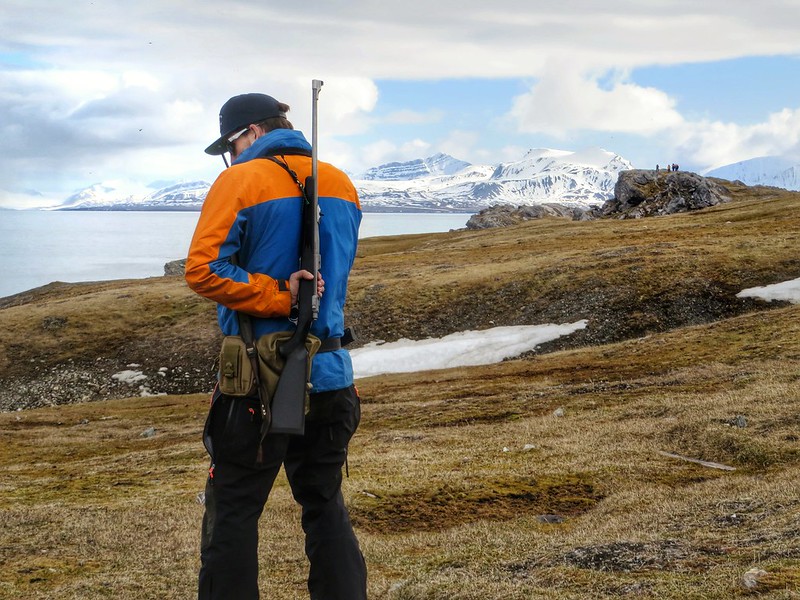
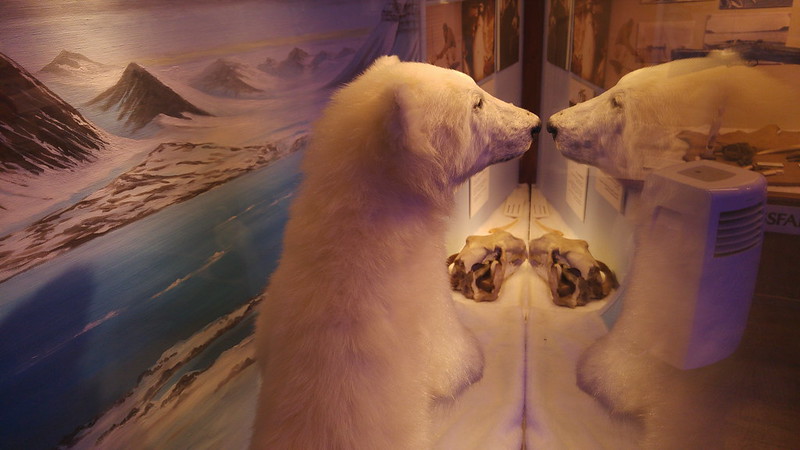
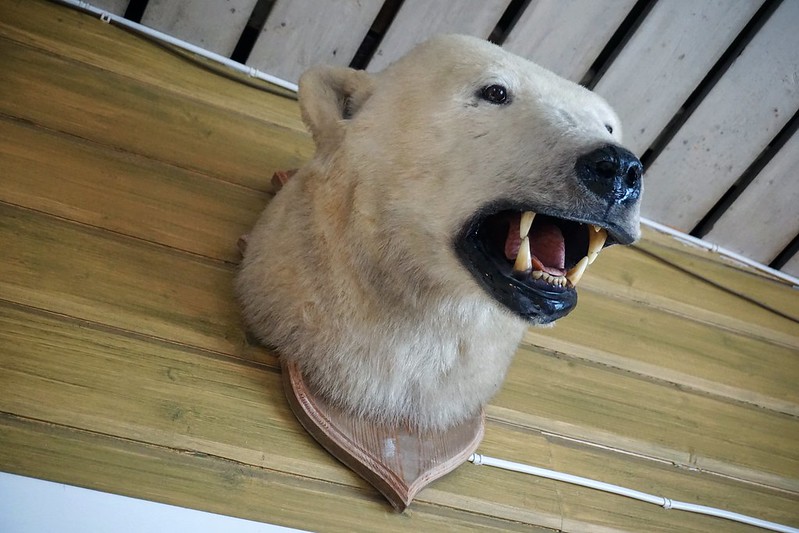
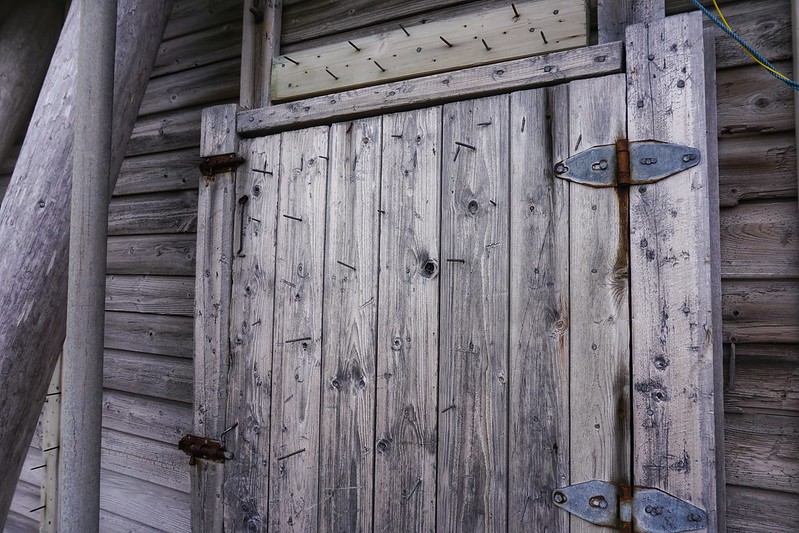
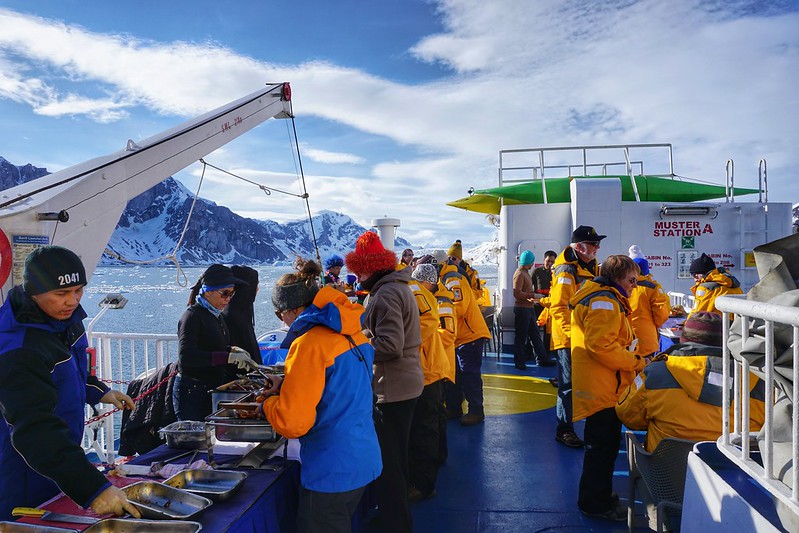
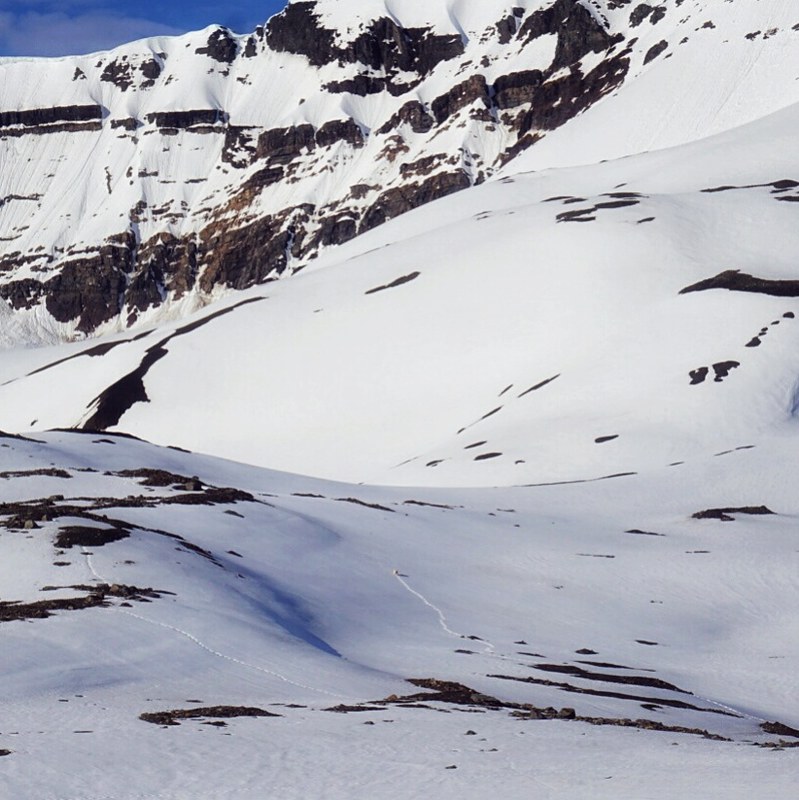
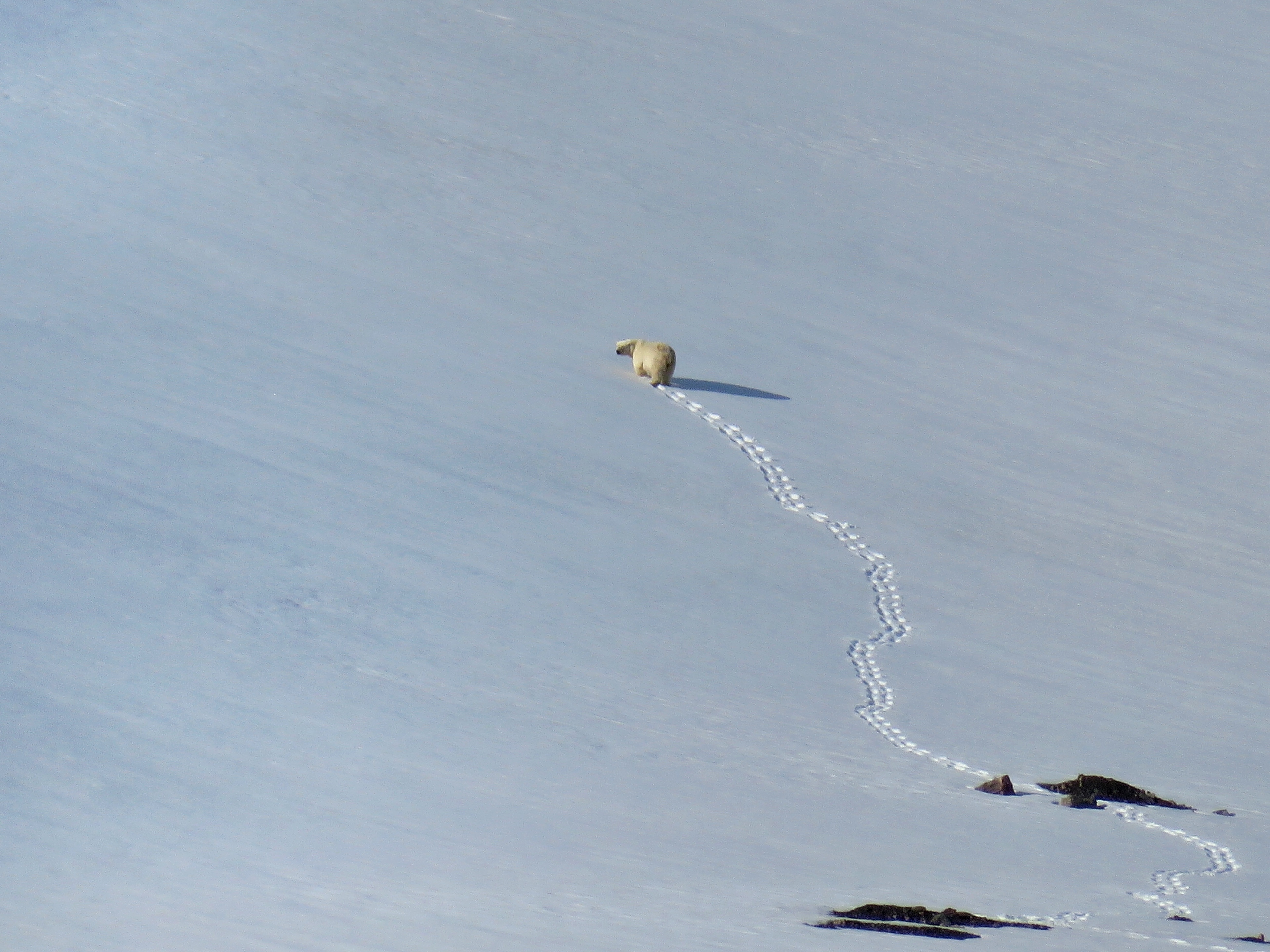
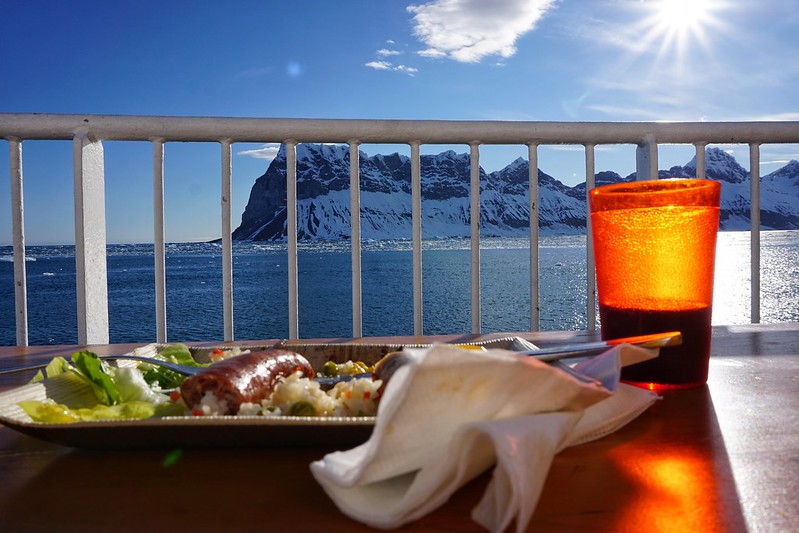
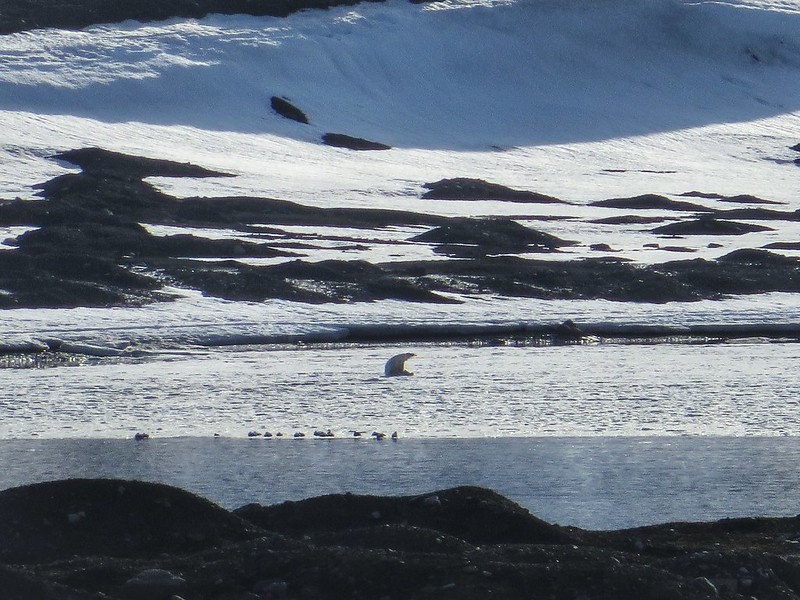
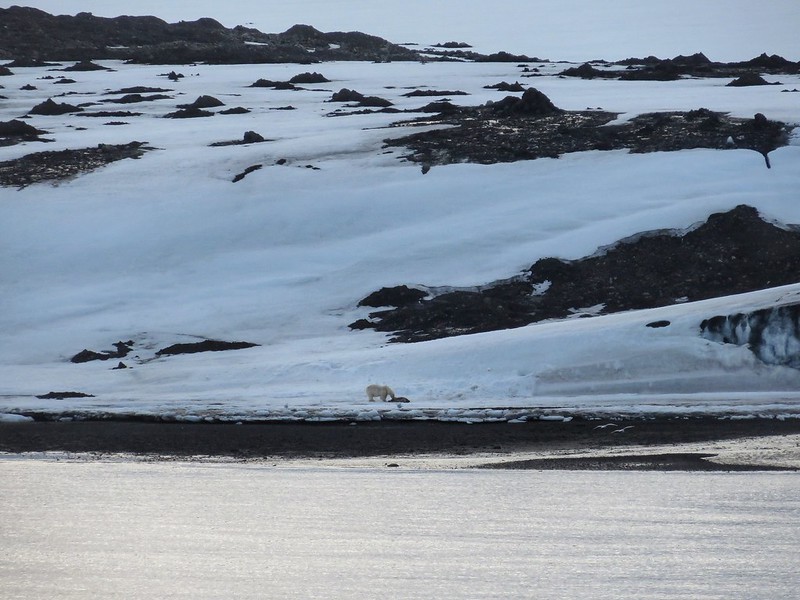
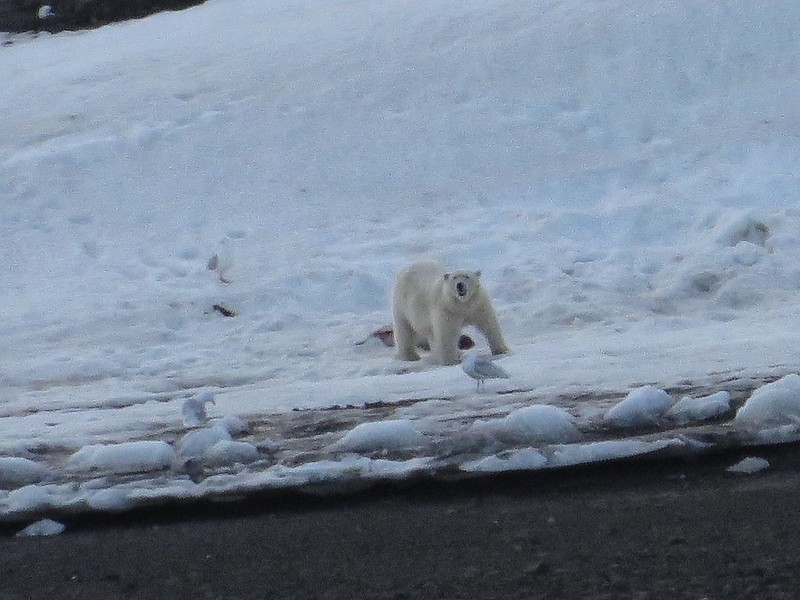
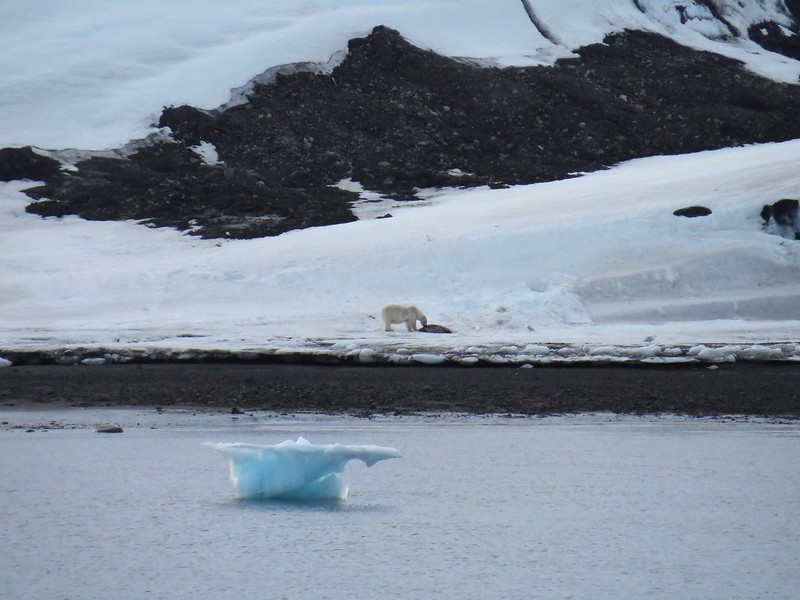

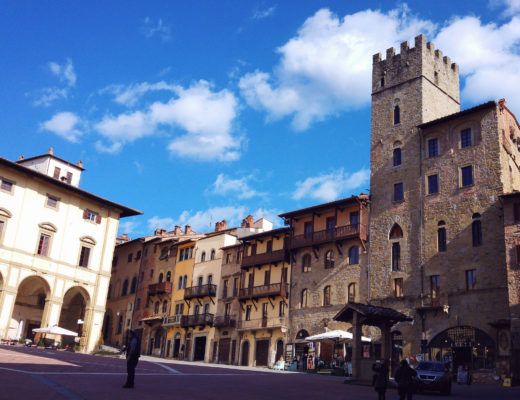
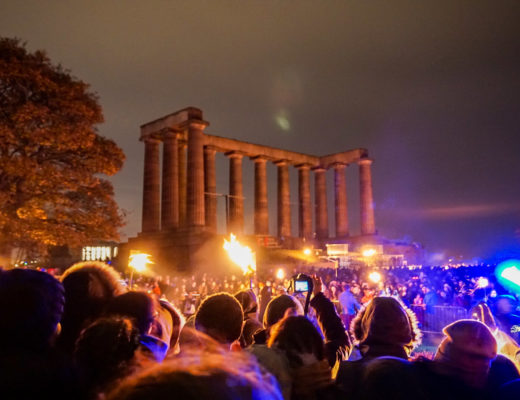
13 Comments
Roaming Required (@RoamingRequired)
July 28, 2016 at 12:23 pmWow Flora, just WOW!! What an incredible experience to see these magnificent beasts in the flesh. That’s the sort of experience you’ll carry with you for life.
Flora
September 8, 2016 at 9:58 amI’m still trying to wrap my head around it Roma! Fingers crossed I’ll remember every detail even when I’m old and grey.. :p
Jub
July 28, 2016 at 3:56 pmFlora, that is such an epic experience. Polar bears have been my favourite animal for years, would love to see something like this sooner rather than later.
You won’t forget that anytime soon 🙂
Flora
September 8, 2016 at 9:59 amPolar bears have always held a special place in my heart, Jub – and now I think I love them even more! Thanks so much for commenting 🙂
Kristine
July 31, 2016 at 4:54 amI got so excited reading your entry! Coincidentally, I watched Frozen Planet by BBC last night and there was a part about polar bears! What an adventure you had!
Flora
September 8, 2016 at 10:00 amAhh Frozen Planet is the best!! And seeing the same world in real life is pretty much a dream come true 🙂 Glad you found it exciting too, Kristine!
Deepak
August 2, 2016 at 6:14 amWhat a amazing place of Norway and nice article shared …..Nice photography and sharing pictures are awesome.
Flora
September 8, 2016 at 10:02 amThanks so much Deepak!
eM
August 15, 2016 at 5:59 pmWonderful experience. I love the photos on the deck. Such beautiful colours.
Flora
September 8, 2016 at 10:02 amI’m pretty sure Quark choose their bright yellow parka jackets to be the perfect contrast with the gorgeous shades of blue and white all over the Arctic 🙂
Emily
September 9, 2016 at 12:24 pmWonderful….I the all photos
Tiago
September 14, 2016 at 6:37 pmI love the bears.
Flora
September 15, 2016 at 9:05 amMe too, Tiago!